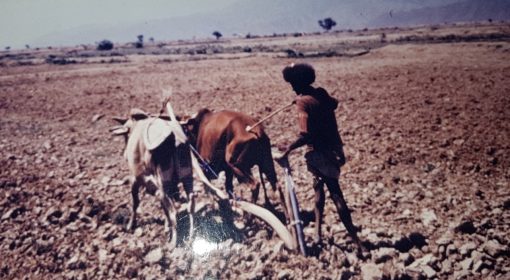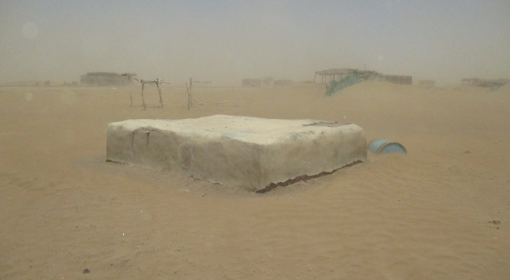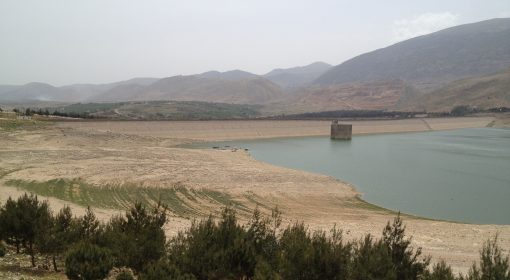By Abraham Mehari Haile and Frank van Steenbergen
Eastern Sudan where the Gash River Basin runs is characterized by extreme poverty caused by frequent crop failures and very low agricultural production and productivity. Over 80% of Gash Basin communities depend on agriculture for their livelihoods, being irrigated agriculture, or livestock keeping. With groundwater table declining at alarming rates, and the little rainfall of less than 200 mm/year, the Gash river is the only source of water in the area. Irrigation is primarily by spate irrigation, i.e, the use of floods during the summer season. The arable land in the Gash reaches more than 80,000 ha, but due to mainly poor field water management practices the actual annual sorghum cropped area hardly exceeds 30,000 ha and the productivity (<1 ton/ha) is far below the global averages or local targets from the Sudanese Agricultural Research Corporation.
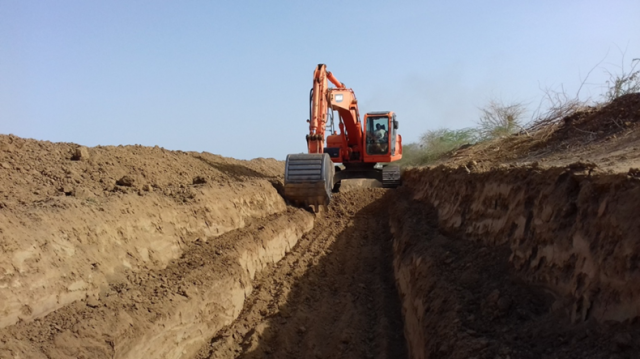
Excavating first time command area canals in Gash
For a long time there was no proper land and water allocation system in the main irrigation blocks off Gash. Land use was decided by lottery – with a farmer using a different piece of land every year. There was no incentive to invest in command area water management structures Water was supplied to large plots of land – often 8-10 kilometres long – devoid of field channels or field bunds. As a result the head section received too much water, suffocating the crop, with the best crop grown on the residual moisture in the after season. The middle section did well, but it was only a narrow strip. The tail section was dry. This all changed around 2010 as part of the IFAD supported Gash Rural Livelihoods Project. At this time land was allocated to individual farm families, creating the basis to invest in land and water management.
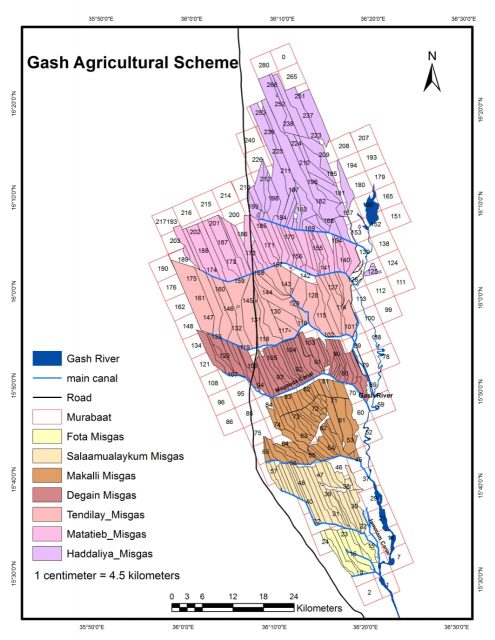
MetaMeta and the Hydraulics Research Centre (HRC-Sudan) with generous support from IFAD, Aqua4Sudan and EU, introduced low-cost (25 USD/ha) field water management improvement interventions in about 3000 ha. These combined a cross-structure (weir) and improved stone re-enforced field intake to enhance the floodwater supply; internal earthen bunds to cut by half the size of the mesga (irrigation plot) that is now large at an average of 250 ha, and 3.5 km long internal earthen canal to irrigate the lower half of the field.
The simple interventions in water allocation had spectacular results. They improved the spatial soil moisture distribution by a quarter, doubled the sorghum production while at the same reducing the irrigation demand by a third. Moreover, following the harvest of the sorghum crop, there was substantial residual soil moisture within the root zone, particularly in the upstream part of the mesga. This is because the flow that was covering the whole mesga, is now directed to irrigate only 50% of the area and hence the wetting front moved fast reducing percolation losses.
These promising results have been debated by the farmers and the other key Gash Basin stakeholders who recommended up-scaling the interventions to the whole 80,000 ha of the Gash scheme. The total investment is estimated at 2 million USD while the annual income from sorghum production is expected to double to 30 million USD. Furthermore, substantial income can also be generated from various vegetables including watermelon and green beans that can be grown as second crops on residual moisture.
Prepared in support of the development of Voluntary Guidelines for Sustainable Water Allocation in Agriculture by FAO, ESCWA and AOAD for the League of Arab States
